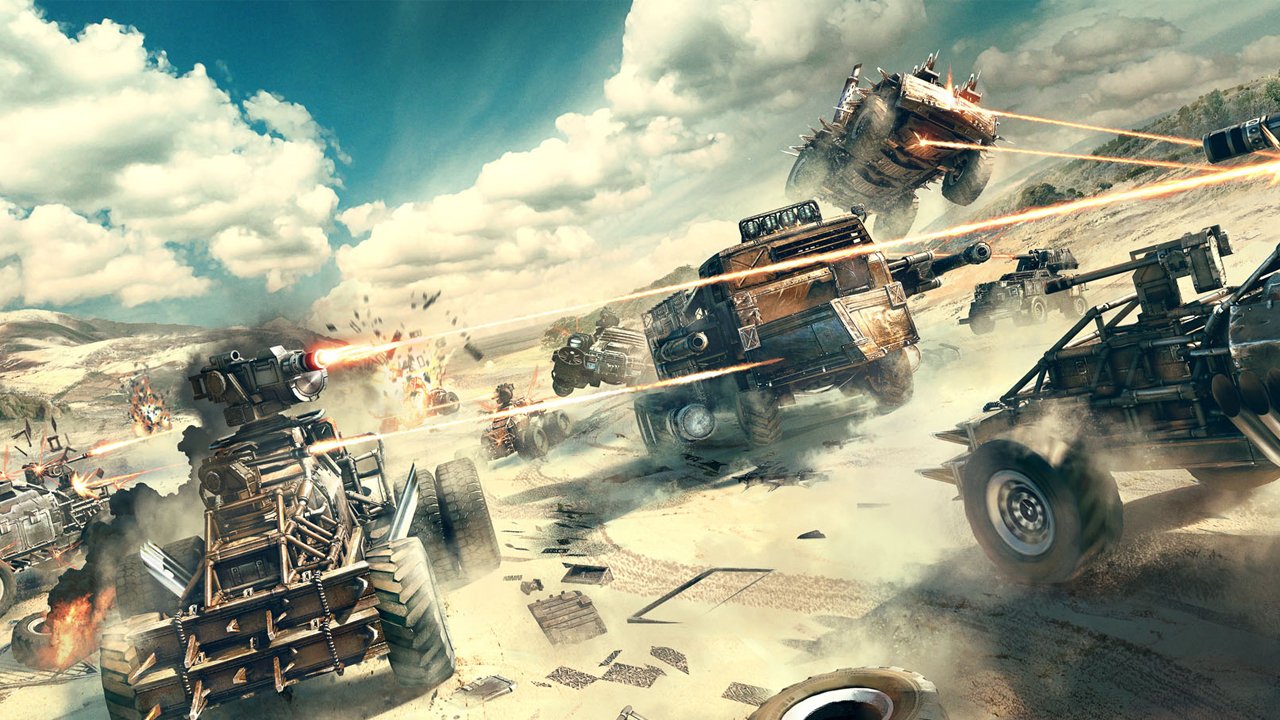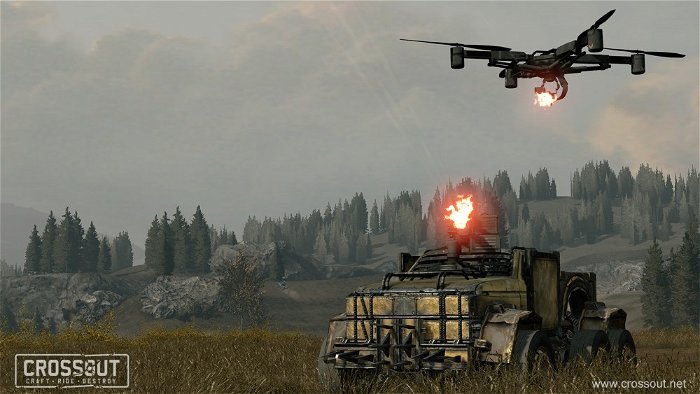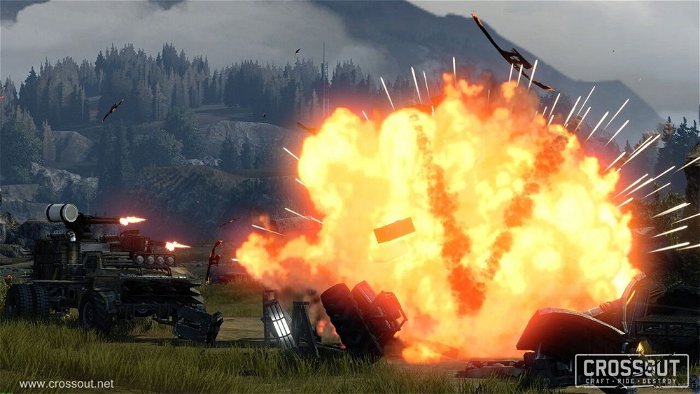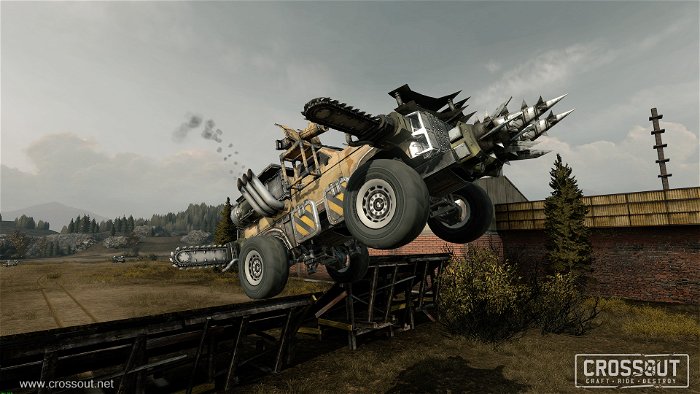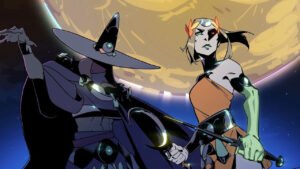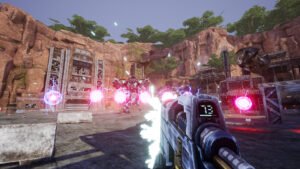When Avalanche’s Mad Max hit store shelves last year, it had a lot to live up to. Not only did it have to capture the spirit of a pedigreed film series, it also had to live in the shadow of the spectacular Fury Road. Unfortunately, despite being a solid open-world romp, it failed to properly recreate the thrill of post-apocalyptic car battles that George Miller helped pioneer back in the 80s. Leave it to a team with half the budget, if that, to actually nail what makes the Mad Max franchise work… and without the brand name.
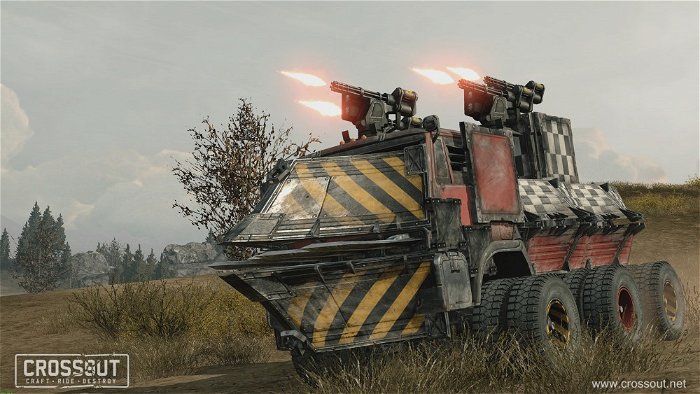
Crossout is, for all intents and purposes, a free-to-play multiplayer lovechild between Miller’s iconic series and the dormant Twisted Metal franchise. Targem, a Russian developer, has had a long history with car-based games, and in fact, they’ve even put out a few automotive combat titles in the past. Nothing in their output has quite matched the scope they’re aiming for with their latest, which seeks to combine elements of MMOs, RPGs, racing games, and deathmatch arena shooters.
Despite sounding like a strange combination of genres, what Crossout achieves through its core gameplay is impressive. Players start out by picking a faction, are assigned a rickety old rustbucket of a vehicle, and then get thrown into either a deathmatch or a raid. In my time with the title, there was only one type of battle mode, which was a standard “capture the enemy base” affair. And yet, each match managed to feel dynamic and interesting. Even with just the handful of maps available, I was constantly experimenting with new ways to play. Send my truck off a cliff into a buggy? Drive around a major skirmish to claim a base? Park inside abandoned warehouses or behind statues to ambush the competition? There were a lot of ways to approach each match, which I appreciated.
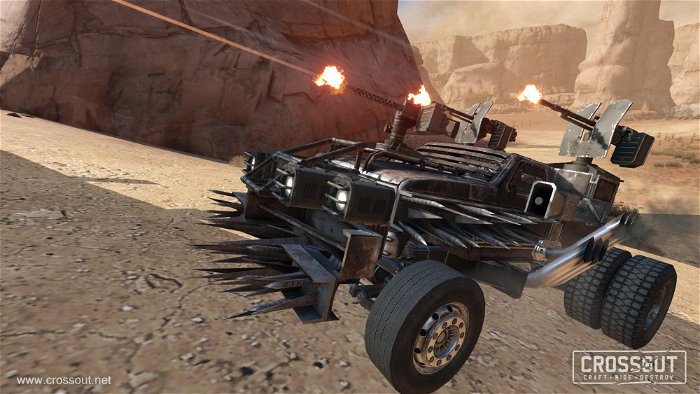
Another aspect of the game that showcases a nice variety of options is the vehicle customization. What you do to your car goes way beyond just making it a little faster, or painting it a different colour. One strategically placed part can mean the difference between a steady, sturdy vehicle and a swerving, tumbling monstrosity. Digging into the “Build” feature, I found it to be comparable to a grittier take on the customization mechanics found in 2008’s Banjo Kazooie: Nuts & Bolts. If you have enough parts, you can make practically anything you want. Personally, I went for a massive pick-up truck armed with a shotgun, two LMGs, a giant eagle ornament on the front, and a sweet lightning-pattern paintjob. In matches I encountered all sorts of weird behemoths; from tanks fashioned out of old airplane cockpits, to semi-trucks headed up by massive ramrods composed of blades. Your imagination really is the limit here.
Well… your imagination and how much time you’re willing to put forth into matches to get better gear. The biggest caveat of Crossout being a free-to-play game is that, well, it’s a free-to-play game, and we can’t seem to have one of those these days without some sort of dubious player economy and microtransactions. Allegedly, you can get better parts through raids and matches. In reality, I saw more people stockpiling bad parts from all their matches, selling that junk, then trying to buy absurdly marked-up items on the marketplace. With seemingly no limit in place to curb players’ propensity for price gouging, decent weapons were locked behind high prices. High prices that one would have to either sell a lot of junk to get the coin to pay for, or just spend money on one of three microtransaction packages. The cheapest one is $20 (USD), and the most expensive is $50.
While that might not seem too bad, there are two major problems with these packages. First of all, players automatically get a cool car with good weapons for buying them, and sure enough, going up against players who obviously spent money is a chore. Secondly, the coinage you get for spending $50 is a pittance compared to what a lot of decent items go for, meaning that you’ll have to spend a lot more to get what you want. For a game built around scrounging together parts and making a custom car, it feels a lot less like scrounging, and a lot more like paying to win. Which is a shame, and something I hope gets addressed in the final release.
I say this because, despite a broken player economy system, Crossout is a very compelling and fun game. The core driving mechanics are sound, and shooting feels very natural and smooth. Not only that, but it’s a game where the customization really does impact how your ride performs, and by proxy, how you play. It’s something that I can see myself sinking some serious time into when it gets a wider release. Whether or not I stick around for the long haul, however, depends entirely on how well-regulated the market is and how little microtransactions factor into players being able to get ahead.
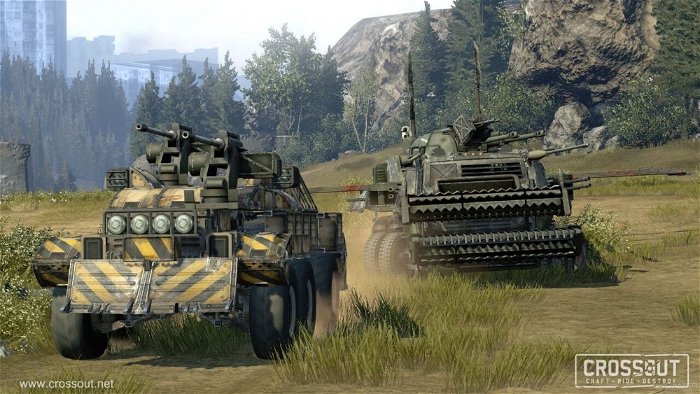
As it stands now, though, Crossout seems like a very promising game, despite some shaky framework around it I had a lot of fun during my time with it and I feel like it could shape up to be something really special.
